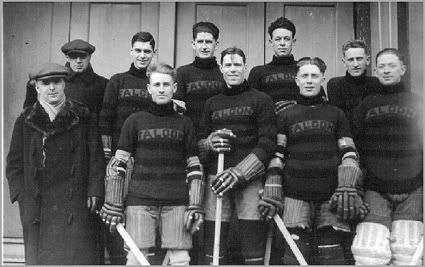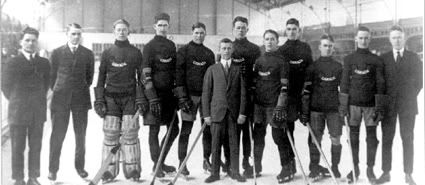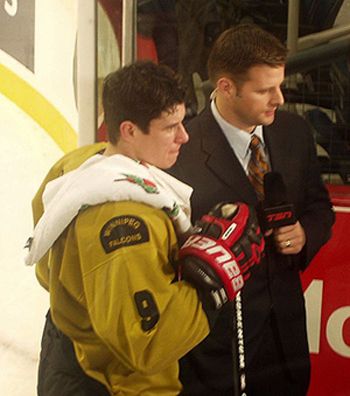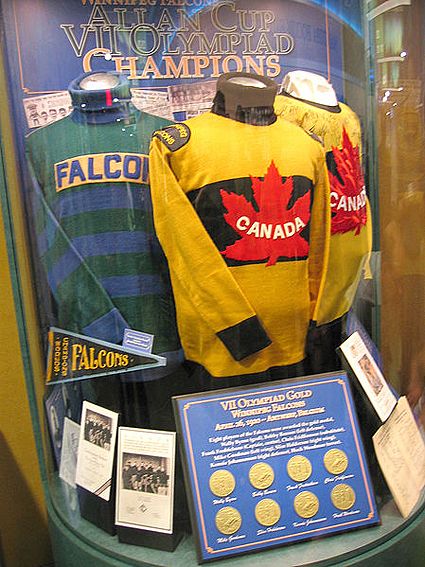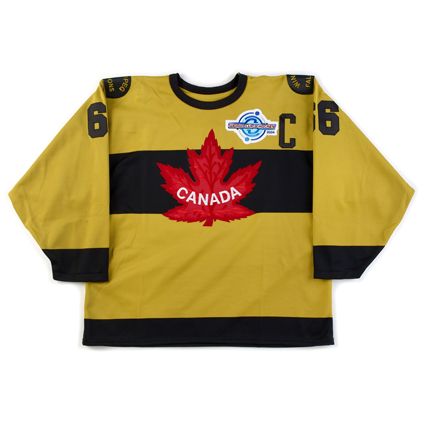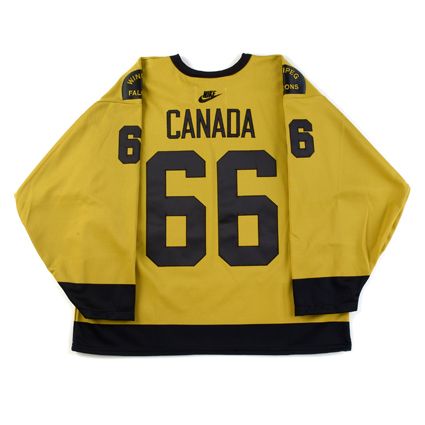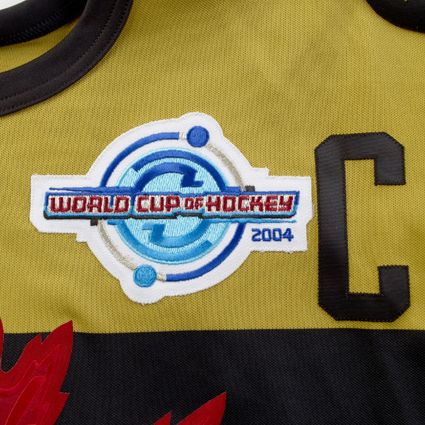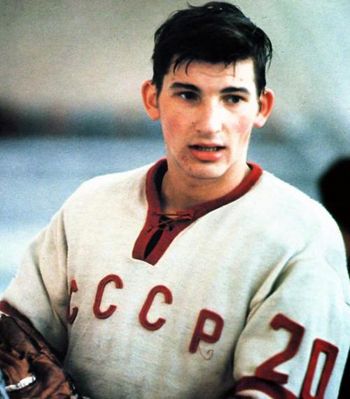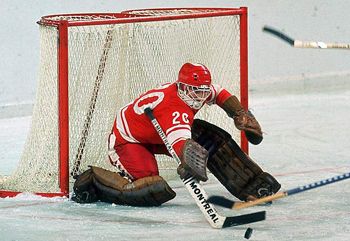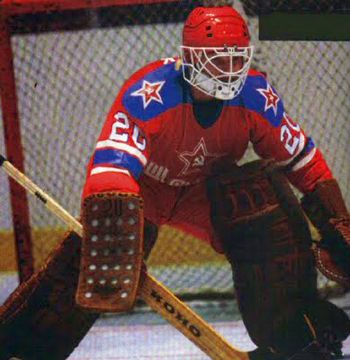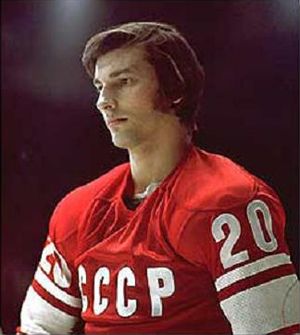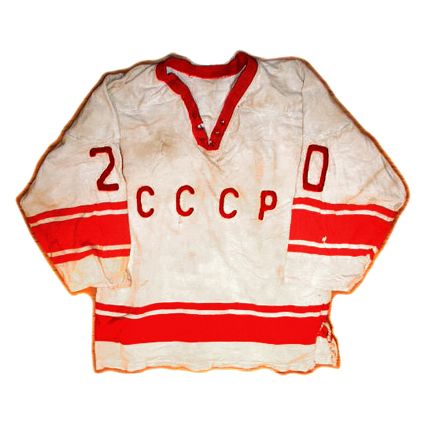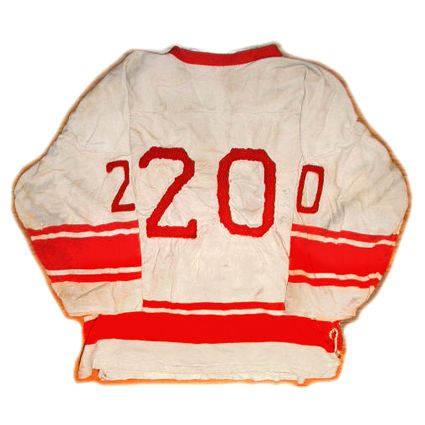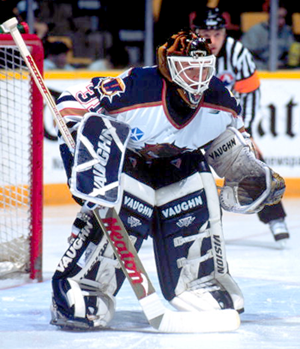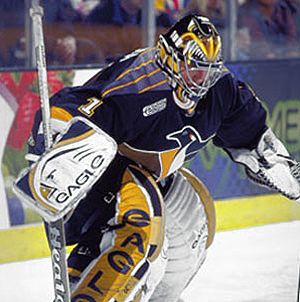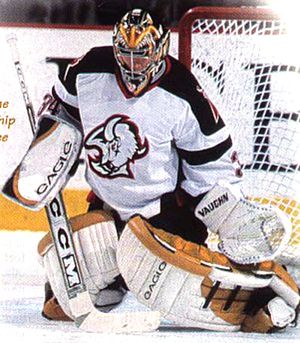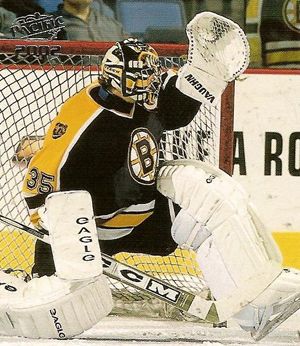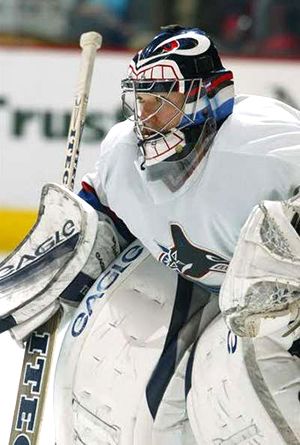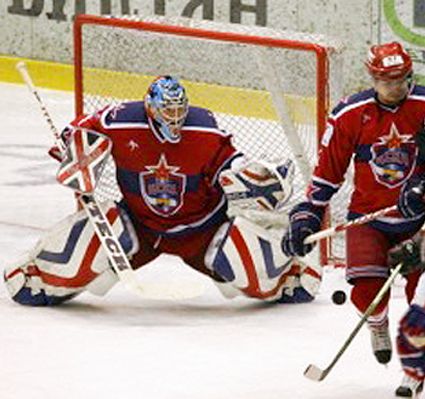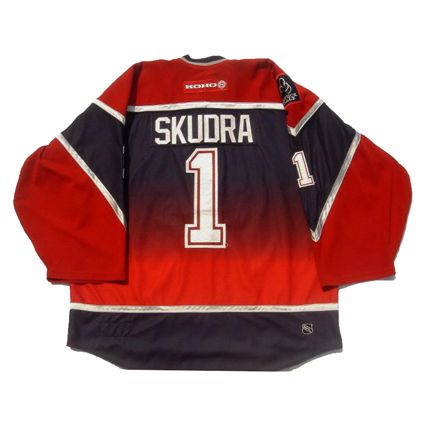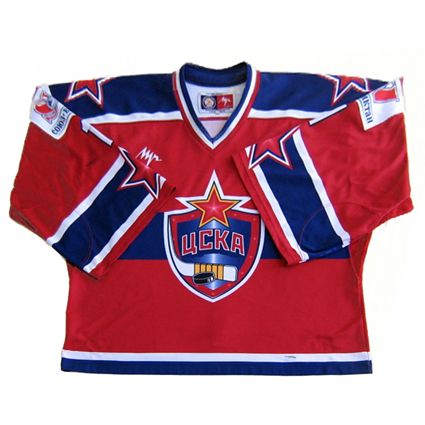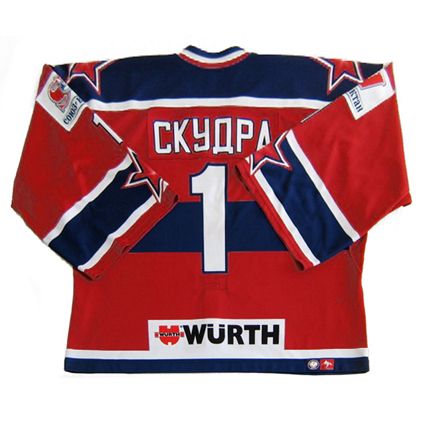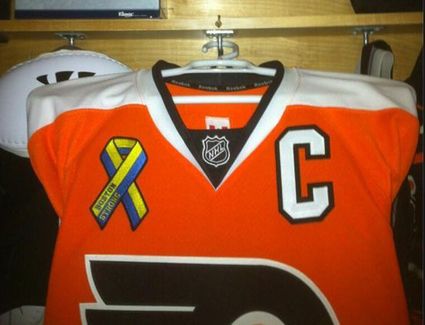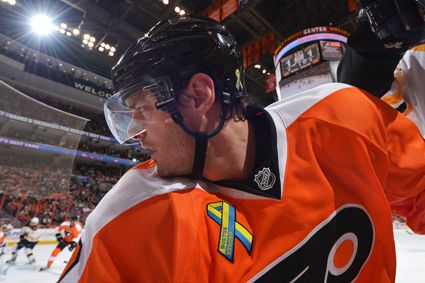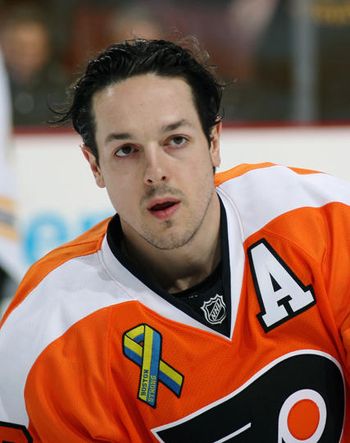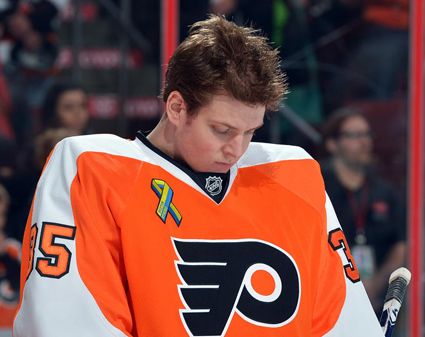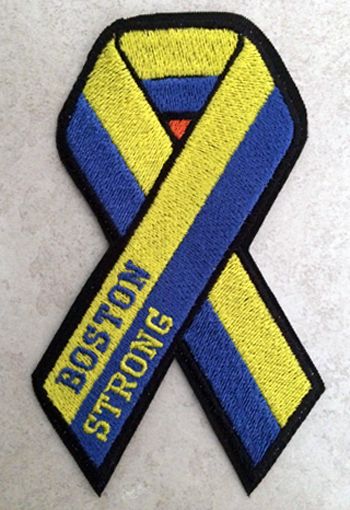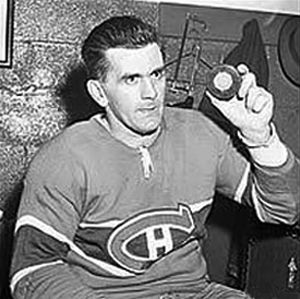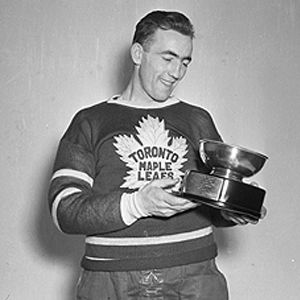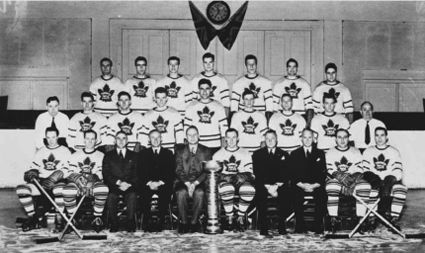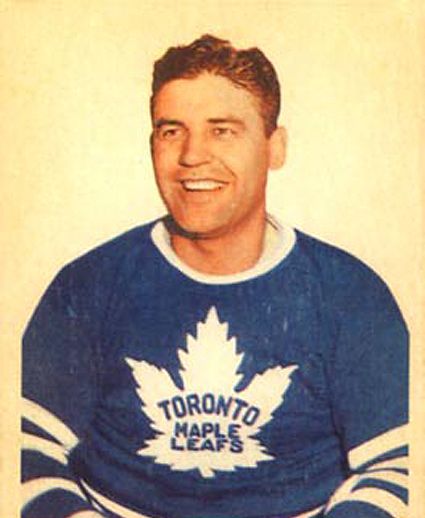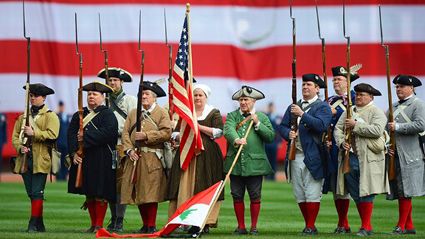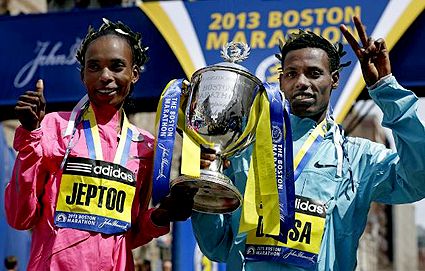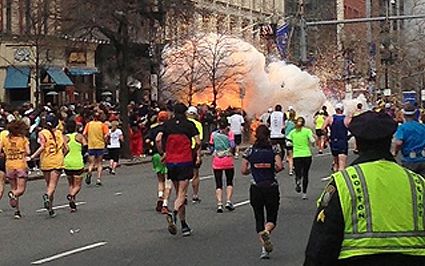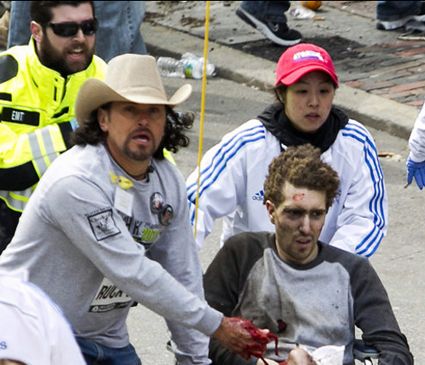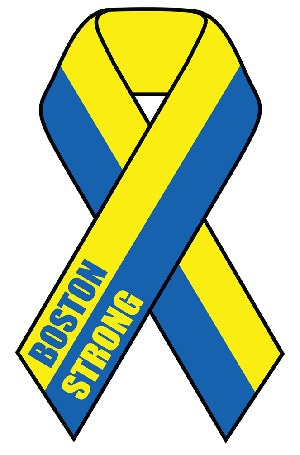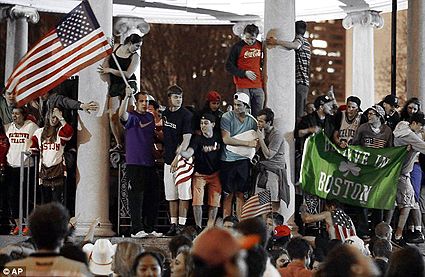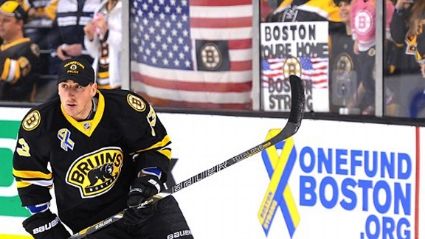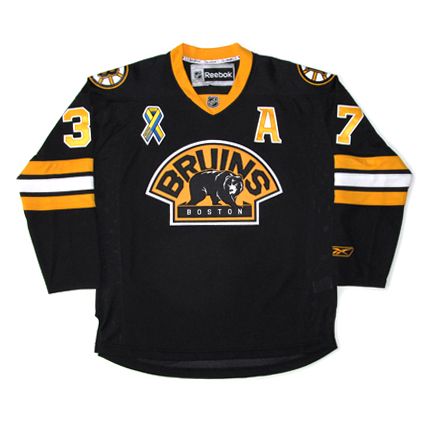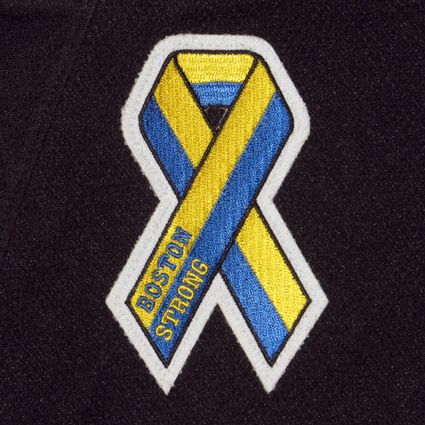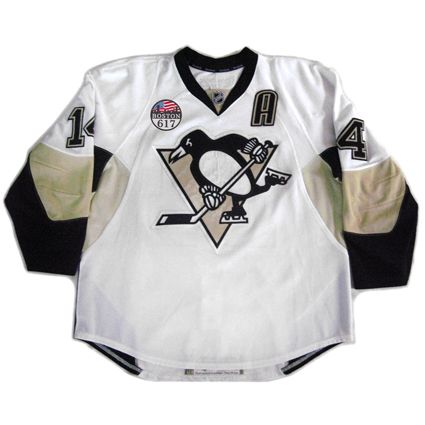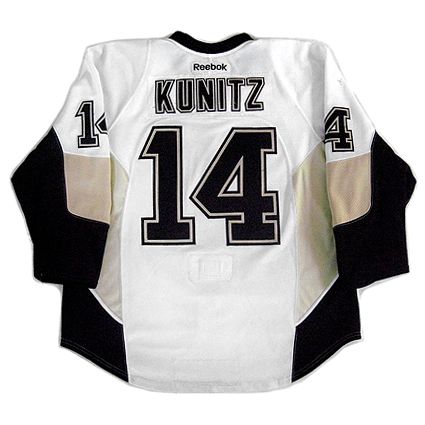CANADA WINS OLYMPIC HOCKEY HONORS, OUTCLASSING SWEDENFalcons Place Winnipeg Conspicuously on World Sporting Map,
Overwhelming Swedes in Final 12 to 1 -
Byron Drops in Surprise and Scandinavian Team
Escapes a Whitewash.
ANTWERP, April 26 (Associated Press) - Canada won the Olympic hockey championship tonight, easily defeating Sweden by a score of 12 to 1. Sweden's goal was scored in the first half, after ten minutes of play, and came as an utter surprise to the Canadians. The victors had easily scored five goals, when Sevensson, the Swedish right defence, carried the puck down near to the Canadian goal and drove it into the net, surprising Goalkeeper Byron so much that he fell down. The Canadian line-up was the same as in yesterday's game, with the exception of one position - Fridfinnson replacing Woodman. The score at the end of the first half was: Canada, 5; Sweden, 1.
--------------------------------------------------------------------------------
This was the famous goal, the only one scored against the Falcons in the whole tournament. The Swedish team considered this goal a victory, putting them ahead of all the other European teams in the European hockey world. Did the Falcons momentarily lose their focus? Did Wally Byron accidentally let it in because the Swedes were such nice guys? We'll never know for sure.
Saturday, April 26, 2014
1920 Canada Frank Frederickson Jersey
The Winnipeg Falcons were founded in 1911 with a roster of players of Icelandic decent because they were not welcomed on other teams due to racial prejudice. The Falcons orginally played until 1917 and the team was then reorganized in 1919 after a number of their players returned from service in World War I.
The Falcons were chosen to represent all of Canada at the Olympic Games by virtue of having won the Allan Cup as the 1920 Canadian National Senior Amateur Champions.
Ice hockey was first introduced during the 1920 Summer Olympics, which were held in Antwerp, Belgium. The participating nations were the hosts Belgium, Czechoslovakia, France, Sweden, Switzerland, the United States and Canada, who defeated Czechoslovakia 15-0 on April 24th to open their schedule thanks to Haldor Halderson's 7 goals and team captain Frank Frederickson's 4 with Magnus Goodman contributing 2 and Allan Woodman and Konrad Johannesson one each.
Canada next beat the United States in a close 2-0 game on April 25th Frederickson and Johannesson providing the scoring, which set up a meeting on this date in 1920 between the two undefeated teams, Canada and Sweden.
The game story from the Associated Press from that match documents the ease of Canada's victory.
Halderson opened the scoring for Canada at 1:15 of the contest and added a second goal, Canada's 11th, late in the game. Chris Fridfinnson's only goal of the tournament came 40 seconds after Halderson's opener, giving Canada a 2-0 lead before the game was only two minutes old.
Frederickson got on the scoreboard at 5:20 for the first of his 7 goals. Sweden got their only goal of the game at 15:58 to make it 3-1 prior to Frederickson adding completing a hat trick with two goals within 1:35 of each other at 16:00 and 17:35.
Goodman scored at 23:47 followed by Robert Benson joining the scoring parade at 28:09 to make it 7-1. Frederickson then put on a clinic with three consecutive goals for his second hat trick in less than six minutes, with the first two coming 15 second apart.
Halderson then netted his second of the game and Frederickson closed out the scoring with his 7th at 39:02, securing the gold medal for Canada.
On their return to Canada, they were honored with a parade, given gold pocket watches and honored with several banquets.
On April 29th, 2006 the Winnipeg Falcons were inducted into Canada's Olympic Hall of Fame and there is now an exhibit in honor of the Falcons at the MTS Center in Winnipeg.
For further reading, there are now several books available about the Falcons, When Falcons Fly, Long Shot and Falcons Gold. We also recommend WinnipegFalcons.com, which proved invaluable in researching this entry.
When the North American pool of the World Cup of Hockey began in 2004, the United States travelled to Montreal to take on Team Canada, who wore 1920 Winnipeg Falcons throwback jerseys. Team Canada won the contest by a 2-1 score on goals by Martin St. Louis and Joe Sakic. It would be the only time Team Canada's senior team would wear the Falcons jerseys.
The jerseys were worn one once more, in an exhibition game between Canada's World Junior Team and Team Finland on December 20th, 2004 at the MTS Center in Winnipeg, which ended in a 6-0 win for Canada before they would go on to dominate the 2005 World Junior Tournament in Grand Forks, North Dakota with a team that included Sidney Crosby. The full roster of players from the exhibition game can be found here.
The only time Crosby ever wore the Winnipeg Falcons jersey
Today's featured jersey is a 1920 Canada Frank Frederickson jersey as worn during the first ever ice hockey tournament at the Olympic Games.
This sweater is on display at the MTS Centre in Winnipeg, home town of the Falcons. Note also their blue and green barberpole striped jersey which the Falcons wore during domestic league play in Manitoba.
Frederickson would go on to have a lengthy career as a professional, joining the Patrick brothers Pacific Coast Hockey Association's Victoria Aristocrats for the 1920-21 season. He would remain with the club through a name change to the Victoria Cougars in 1922 and a switch to the Western Hockey League in 1924.
He would win a Stanley Cup in 1925 with Victoria, but after the 1925-26 season the Cougars rosters was sold to interests in Detroit, who had been granted an expansion franchise in the NHL. In honor of the source of their players, the new franchise was named the Detroit Cougars, who would eventually evolve into the Detroit Red Wings after a change in ownership.
After just 16 games with Detroit, Frederickson was again on the move, this time to the Boston Bruins. He would spend four more years in the NHL with stints with the Pittsburgh Pirates before a second round with Detroit, who by now were on their second name, the Detroit Falcons, a fitting place for the former Winnipeg Falcon to close out his NHL career.
During his professional career Frederickson would play a total of 324 games, scoring 170 goals and 266 points. He was inducted into the Hockey Hall of Fame in 1958
Bonus jersey: Today's bonus jersey is a 2004 Team Canada Mario Lemieux "Winnipeg Falcons jersey as worn on August 31st, 2004. One unique aspect of the Falcons throwbacks is that all the jerseys had "CANADA" on the back instead of each individual player's name, similar to the 1972 Canada Cup jerseys.
The jersey also features the 2004 World Cup of Hockey logo patch on the upper left chest, along with Mario Lemieux's captain's "C".
While the Falcons normally wore blue and green "barberpole" striped jerseys, it's uncertain why the Falcons' Olympic jerseys were old gold and black, a choice of colors that proved unpopular with fans in 2004 and earned them a spot in Third String Goalie's "Curious, Weird and Ugly" Collection.
Here is Team Canada in action wearing their Falcons jerseys in the 2004 World Cup of Hockey versus the United States.
Labels:
Canada,
Frederickson Frank,
Winnipeg Falcons
Friday, April 25, 2014
1970 Soviet Union National Team Vladislav Tretiak Jersey
Widely considered one of the greatest goaltenders in hockey history, Vladislav Tretiak was born on this date in 1952.
The many highlights of Tretiak's career appear over and over again of the IIHF list of the Top 100 Stories of the 20th Century. The Soviets victory over Canada in the 1981 Canada Cup ranks as #9, the New Year's Eve game with Montreal #23, the shock opening game of the 1972 Summit Series as #3 and the Soviets victory over the NHL All-Stars in the 1979 Challenge Cup as #36.
Even the defeats of the Soviets during the Tretiak era were so uncommon that they merit recognition on the list as well. A loss to Poland in 1976 was #39, the conclusion of the 1972 Summit Series was #2, the loss to the USA in the 1980 Olympics was #1, their loss to the Czechs in 1972 was #5 and in again 1974 was #67.
An unknown 20 year old, Tretiak was the starting goaltender for the Soviet National Team as the historic 1972 Summit Series began in Montreal. Since the Canadian scouts had only seen him play once, a dismal performance in which he allowed eight goals against due to excessive celebrations at his bachelor party the night before, he was dismissed as no threat to the best professionals Canada had to offer.
Two Canadian goals before the game was seven minutes old only seemed to reinforce the scouts opinion on Tretiak, which would soon change. The Canadians would manage just one more goal for the remainder of the contest as the Soviets came alive and pummeled the startled Canadians 7-3.
His continued outstanding play in the first half of the series earned him a tremendous amount of respect and admiration as the Soviets showed that they were able to compete with the Canadians. Eventually Canada would prevail in the series by the slimmest of margins, but Tretiak's reputation had been cemented by his play in the series.
Although he was drafted by the Montreal Canadiens in 1983 , it was at a time when Soviet players were not allowed to leave for the NHL. Tretiak would spend 15 full seasons playing for Central Sports Club of the Army (CSKA), or as more commonly known, the "Red Army".
During his 15 seasons in the Soviet Hockey League, Tretiak and Red Army would win the championship 13 times and finish runners up the other two. Tretiak was also named the First Team All-Star Goalie 14 consecutive seasons and league MVP five times. Outside of the Soviet Union, Tretiak and the club would take home the European Cup 13 times.
Internationally, Tretiak's resume would show three Olympic gold medals (Japan in 1972, Austria in 1976 and Yugoslavia in 1984), ten World Championship gold medals (1970, 1971, 1973, 1974, 1975, 1978, 1979, 1981, 1982 & 1983) and gold medals in the European Championships nine times. In addition he would be named the winner of the Golden Hockey Stick as the most outstanding player in all of Europe in 1981, 1982 and 1983.
He would also participate in two Canada Cups, earning a bronze with a depleted squad in 1976 and gold in 1981 when he was named the tournament's MVP. His final goals against average in 98 international games was an outstanding 1.78.
Another career highlight for Tretiak is the 1975-76 Red Army tour of North America when the Red Army faced off against various NHL club teams, the first time any Soviet club team had faced off against clubs from the NHL. Red Army came away with dominant victories over the New York Rangers and Boston Bruins and a notorious loss to the Philadelphia Flyers, but the most memorable game was a New Year's Eve contest against the Montreal Canadiens, that season's eventual Stanley Cup Champions, which ended in a 3-3 tie with Montreal outshooting Red Army 38-13 in a game considered by many to be one of the greatest games ever played.
After his early retirement in 1984 at the age of 32, ranked as #37 in the Top 100 Stories of the Century by the International Ice Hockey Federation, due to his desire to wanting to face a new challenge of playing in North America and the Soviet authorities refusal to grant him permission and the strain of the eleven month a year commitment required by the Soviet hockey system plus friction with his coach Viktor Tikhonov, Tretiak would finally make his way to North America in 1990, having been hired by the Chicago Blackhawks as their goaltending coach.
He would become the first Soviet-trained player to be inducted into the Hockey Hall of Fame in 1989 and the first European player voted in without ever having played in the NHL. His induction would be ranked by the IIHF as #55 on Top 100 Stories of the Century. In 2000 he would be voted the Best Russian Hockey Player of the 20th Century as well as being named the goaltender for the IIHF Centennial All-Star Team, a tremendous honor of he highest caliber, as only one player at each of the six positions would be named to this most exclusive team. Tretiak would be elected as the head of the Russian Ice Hockey Federation in 2006.
The IIHF Centennial All-Star Team announcement honoring Valeri Kharlamov, Tretiak, Slava Fetisov, Borje Salming, Wayne Gretzky and Sergei Makarov.
Even the defeats of the Soviets during the Tretiak era were so uncommon that they merit recognition on the list as well. A loss to Poland in 1976 was #39, the conclusion of the 1972 Summit Series was #2, the loss to the USA in the 1980 Olympics was #1, their loss to the Czechs in 1972 was #5 and in again 1974 was #67.
Today's featured jersey is a 1970 Soviet Union Vladislav Tretiak jersey. The owner of this fantastic piece of hockey history dates this jersey as having been worn from 1970 to 1972, up until the 1972 Summit Series when they Soviets wore a brand new set of sweaters.
Tretiak would have then worn this beginning at the age of 17 at the 1970 European Junior Championships (gold), followed by the World Championships (gold) as well as the Izvestia Cup (silver). In 1971 the cycle would be repeated with the European Juniors (gold), World Championships (gold) and Izvestia Cup (gold). The routine would change in 1972 with first the Olympics in Sapporo, Japan (gold) followed by the World Championships (silver) later in the spring. If in fact worn for each of those tournaments, which is entirely feasible as all those tournaments would total 34 games in all for both the red and white sweaters, this would have been a gold medal winning jersey six times and a silver twice out of eight tries, making this perhaps the most accomplished sweater in hockey history!
To read an interesting story about Tretiak's later white sweater from the 1974 Summit Series, check out this story of theft, deception, adoration and reunion about Doug Duke's Tretiak Sweater which was originally published by the Montreal Gazette.
Today's first video is his introductory video from Tretiak's Hall of Fame induction.
Vladislav Tretiak reunited with his white sweater
from the 1974 Summit Series
from the 1974 Summit Series
Today's first video is his introductory video from Tretiak's Hall of Fame induction.
Here are highlights from the memorable game between the Red Army and the Montreal Canadiens on New Year's Eve in 1975.
Labels:
Soviet Union,
Tretiak Vladislav
Thursday, April 24, 2014
2002-03 Vancouver Canucks Peter Skudra Jersey
Pēteris "Peter" Skudra, born on this date in 1973 in Riga, Latvia, began to gain international recognition when he was named to the Soviet Union National Team for the 1991 European Junior Championships where he won a silver medal.
This was a time of great political upheaval in the world, and during his second season of play in the third division, the Soviet Union was dissolved and the Commonwealth of Independent States came into being. For the 1992-93 season, Skudra played for his hometown Pardugava Riga club. Despite only being 19 years old at the time, Skudra was named to the revival of the Latvia National Team for their return to international hockey since 1939.
The Latvians were forced to begin at the base of IIHF ladder system in the World Championships "C" Pool, which they immediately won, earning them a promotion to the "B" Pool for 1994. After another season of domestic hockey in Riga and a second World Championships for Latvia, Skudra took the bold step of coming to the United States as an undrafted free agent, where he started his road to the NHL with a season with the Greensboro Monarchs of the ECHL, where he went 13-9-5 in 33 games. He also appeared in a pair of games with the Memphis RiverKings of the CHL.
The next two seasons Skudra made several more stops, splitting 1995-96 between the Eire Panthers (12 games) and the Johnstown Chiefs (30 games), both of the ECHL.
The following season was one of progress for Skudra, as he took a step closer to the NHL by playing for the Hamilton Bulldogs of the American Hockey League in 32 games after starting the season with another 4 games in Johnstown. Following the season he made his third appearance in the World Championships for Latvia, who by now had earned another promotion, this one to the top level of the IIHF ladder.
Prior to the 1997-98 season, Skudra was signed by the Pittsburgh Penguins organization of the NHL. He began his season with the Houston Aeros of the International Hockey League for 9 games before realizing his dream when he made his NHL debut with the Penguins with 27 minutes of relief for starter Ken Wregget on November 5, 1997. Two nights later he earned a tie agains the Detroit Red Wings in his first start. After relieving Tom Barasso twice, Skudra got his next start in December 6th, where he earned his first NHL victory against the Mighty Ducks of Anaheim.
With both Wregget and Barasso healthy, Skudra also got some playing time that season with the Kansas City Blades in the IHL, posting an excellent 10-3-0 record, which earned him another call up to Pittsburgh, with whom he eventually totaled 6 wins for the season.
He spent the entire 1998-99 season with Pittsburgh, splitting time with Barasso. He posted NHL career highs with 37 games and 15 wins and continued with the Penguins in 1999-00 while backing up Jean-Sebastien Aubin with 20 appearances. He also played in the first NHL playoff game of his career during the postseason.
In an odd series of transactions, Skudra was signed by the Boston Bruins on October 3, 2000 but then claimed on waivers by the Buffalo Sabres just three days later. His entire career with Buffalo lasted just 27 seconds in relief of Dominik Hasek, who returned to the crease to finish the game.
He was on the Sabres roster riding the bench behind the iron man Hasek or spending 2 games in the AHL with the Rochester Americans until he was reclaimed off of waivers by the Bruins five weeks later! He eventually was able to play in 26 games in the crowded Bruins goaltending situation, as they used Byron Dafoe as their number one (45 games), Skudra (26). Andrew Raycroft (15), John Grahame (10) and Kay Whitmore (5). Skudra also made 3 appearances with the Providence Bruins, his fourth team of the season.
He played in 3 games for the Hartford Wolf Pack in the AHL at the start of the 2000-01 season, winning all three. That good start earned him a contract with the Vancouver Canucks as a backup to Dan Cloutier. He played in 23 games for Vancouver, winning 10, the second highest of his NHL career. He also saw action in a pair of playoff games against Detroit.
His second season with Vancouver saw him post nearly identical numbers with the same 23 appearances as well as 9 wins. He also made a single appearance for the Manitoba Moose in the AHL.
Skudra continued his career by returning to Europe for the 2002-04 season when he signed with Ak Bars Kazan who competed in the Russian Superleague. After 9 games with Ak Bars, Skudra was traded to Khimik Voskresensk, with whom he played 39 games over the remainder of the season as their number one goaltender, a position he retained for the 2004-05 season which allowed him to appear in a career high 43 games.
That summer he signed with CSKA Moscow and saw 24 games in goal in 2005-06 and another 19 in 2006-07 before moving to Metallurg Novokuzenzk for the final 13 games of his career before retiring after playing 13 seasons for teams in four different countries in eight different leagues for 20 different teams!
Today's featured jersey is a 2002-03 Vancouver Canucks Peter Skudra jersey. This alternate style was introduced in the 2001-02 season and was used through the 2005-06 season. It was a dark and moody affair, and quite unusual with it's main body that faded from deep blue to deep red, unlike any other in the NHL at the time. Also unconventional was the choice of metallic silver for the names, numbers and trim color rather than white.
It was a very polarizing design that fans either embraced or detested with only the bizarre Phoenix Coyotes alternate standing between it and being the strangest jersey in the NHL at the time and definitely benefitted from being wrapped around a player in 3-D when compared to seeing it laid on a flat surface or as an illustration as much as any jersey we can remember.
Bonus jersey: Today's bonus jersey is a 2005-06 CSKA Moscow Peter Skudra jersey. At the opposite end of the spectrum from the unusual Canucks alternate, this classic hockey jersey from Russia's most storied team, Central Red Army. It embraces the classic look of colored shoulders with simple arm and waist stripes and a bold main crest. In addition is has the traditional band around the chest which evokes the Montreal Canadiens iconic sweaters. Add some bold red stars to the shoulder and arms and you have a jersey which screams "hockey" with pride.
Today's video catches us up on what Skudra has been up to since his playing days ended.
This was a time of great political upheaval in the world, and during his second season of play in the third division, the Soviet Union was dissolved and the Commonwealth of Independent States came into being. For the 1992-93 season, Skudra played for his hometown Pardugava Riga club. Despite only being 19 years old at the time, Skudra was named to the revival of the Latvia National Team for their return to international hockey since 1939.
The Latvians were forced to begin at the base of IIHF ladder system in the World Championships "C" Pool, which they immediately won, earning them a promotion to the "B" Pool for 1994. After another season of domestic hockey in Riga and a second World Championships for Latvia, Skudra took the bold step of coming to the United States as an undrafted free agent, where he started his road to the NHL with a season with the Greensboro Monarchs of the ECHL, where he went 13-9-5 in 33 games. He also appeared in a pair of games with the Memphis RiverKings of the CHL.
The next two seasons Skudra made several more stops, splitting 1995-96 between the Eire Panthers (12 games) and the Johnstown Chiefs (30 games), both of the ECHL.
The following season was one of progress for Skudra, as he took a step closer to the NHL by playing for the Hamilton Bulldogs of the American Hockey League in 32 games after starting the season with another 4 games in Johnstown. Following the season he made his third appearance in the World Championships for Latvia, who by now had earned another promotion, this one to the top level of the IIHF ladder.
Skudra in the AHL with Hamilton
Prior to the 1997-98 season, Skudra was signed by the Pittsburgh Penguins organization of the NHL. He began his season with the Houston Aeros of the International Hockey League for 9 games before realizing his dream when he made his NHL debut with the Penguins with 27 minutes of relief for starter Ken Wregget on November 5, 1997. Two nights later he earned a tie agains the Detroit Red Wings in his first start. After relieving Tom Barasso twice, Skudra got his next start in December 6th, where he earned his first NHL victory against the Mighty Ducks of Anaheim.
With both Wregget and Barasso healthy, Skudra also got some playing time that season with the Kansas City Blades in the IHL, posting an excellent 10-3-0 record, which earned him another call up to Pittsburgh, with whom he eventually totaled 6 wins for the season.
He spent the entire 1998-99 season with Pittsburgh, splitting time with Barasso. He posted NHL career highs with 37 games and 15 wins and continued with the Penguins in 1999-00 while backing up Jean-Sebastien Aubin with 20 appearances. He also played in the first NHL playoff game of his career during the postseason.
In an odd series of transactions, Skudra was signed by the Boston Bruins on October 3, 2000 but then claimed on waivers by the Buffalo Sabres just three days later. His entire career with Buffalo lasted just 27 seconds in relief of Dominik Hasek, who returned to the crease to finish the game.
He was on the Sabres roster riding the bench behind the iron man Hasek or spending 2 games in the AHL with the Rochester Americans until he was reclaimed off of waivers by the Bruins five weeks later! He eventually was able to play in 26 games in the crowded Bruins goaltending situation, as they used Byron Dafoe as their number one (45 games), Skudra (26). Andrew Raycroft (15), John Grahame (10) and Kay Whitmore (5). Skudra also made 3 appearances with the Providence Bruins, his fourth team of the season.
He played in 3 games for the Hartford Wolf Pack in the AHL at the start of the 2000-01 season, winning all three. That good start earned him a contract with the Vancouver Canucks as a backup to Dan Cloutier. He played in 23 games for Vancouver, winning 10, the second highest of his NHL career. He also saw action in a pair of playoff games against Detroit.
His second season with Vancouver saw him post nearly identical numbers with the same 23 appearances as well as 9 wins. He also made a single appearance for the Manitoba Moose in the AHL.
Skudra's final NHL totals were 145 games with a 51-47-20 record with a 2.73 goals against average in six seasons.
That summer he signed with CSKA Moscow and saw 24 games in goal in 2005-06 and another 19 in 2006-07 before moving to Metallurg Novokuzenzk for the final 13 games of his career before retiring after playing 13 seasons for teams in four different countries in eight different leagues for 20 different teams!
Today's featured jersey is a 2002-03 Vancouver Canucks Peter Skudra jersey. This alternate style was introduced in the 2001-02 season and was used through the 2005-06 season. It was a dark and moody affair, and quite unusual with it's main body that faded from deep blue to deep red, unlike any other in the NHL at the time. Also unconventional was the choice of metallic silver for the names, numbers and trim color rather than white.
It was a very polarizing design that fans either embraced or detested with only the bizarre Phoenix Coyotes alternate standing between it and being the strangest jersey in the NHL at the time and definitely benefitted from being wrapped around a player in 3-D when compared to seeing it laid on a flat surface or as an illustration as much as any jersey we can remember.
Bonus jersey: Today's bonus jersey is a 2005-06 CSKA Moscow Peter Skudra jersey. At the opposite end of the spectrum from the unusual Canucks alternate, this classic hockey jersey from Russia's most storied team, Central Red Army. It embraces the classic look of colored shoulders with simple arm and waist stripes and a bold main crest. In addition is has the traditional band around the chest which evokes the Montreal Canadiens iconic sweaters. Add some bold red stars to the shoulder and arms and you have a jersey which screams "hockey" with pride.
Today's video catches us up on what Skudra has been up to since his playing days ended.
Labels:
CSKA Moscow,
Skudra Peter,
Vancouver Canucks
Wednesday, April 23, 2014
2012-13 Philadelphia Flyers Boston Strong Jersey
In a follow up to our post on Patriots' Day about the Boston Bruins wearing the "Boston Strong" ribbon patch and the Pittsburgh Penguins wearing the "Boston 617" patch when they met in Boston on April 20, 2013, five days after the Boston Marathon bombings, reader @FlyersFansInDC on twitter pointed out that the Philadelphia Flyers also wore the "Boston Strong" ribbon on their jerseys when they hosted the Bruins two days later on this date one year ago, April 22, 2013.
We have to admit that we were not aware of the Flyers wearing the yellow and blue Boston Strong ribbon patch until it was brought to our attention. Here is the article from the Flyers website.
Here is a follow up story about the results of the jersey auction and 50/50 raffle donation from the Comcast Spectacor Charites website.
The ribbon patch the Flyers wore was different than the ones worn by the Bruins is a few small ways. First, the Flyers patch did not have the white border that the Bruins version needed to stand out from their black jerseys, and second, sharp-eyed readers will notice the center of the Flyers ribbon has a small, embroidered orange area, not a clear hole in the center.
Update: Following our post Monday about the Boston Marathon bombing and the Bruins tribute jerseys, the 2014 edition of the race was held and, in storybook fashion, an American won the race for the first time since 1983 when 39 year old Meb Keflezihgi won by six seconds.
@3rdStringGoalie Just wanted to mention, the Flyers also did a tribute at their Tuesday game following the bombings https://t.co/BP3snW3nsX
— Flyers Fans in DC (@flyersfansindc) April 21, 2014
@3rdStringGoalie They hosted the Bruins, and wore those patches as well as did a 50/50 to donate to OneFundBoston http://t.co/CBRXZk0E6W
— Flyers Fans in DC (@flyersfansindc) April 21, 2014
This past Friday, the city of Boston and the rest of the nation were able to breathe a sigh of relief. And as those impacted by the horrific tragedy in Boston on Monday, April 15 begin a difficult journey to heal, the strength of these people will again be tested.
"We have all seen what Boston has gone through and how they all rallied together,” said Comcast Spectacor President Peter Luukko. “As someone from New England, I know how much pride that city has. We too have been moved by what we saw last week in Boston and wanted to do our part to help.”
The Flyers, along with the great fans of Philadelphia will lend their support when the Flyers play the Boston Bruins this Tuesday night at the Wells Fargo Center. The organization will be donating the charitable portion of the money collected through the Flyers Charities 50/50 raffle at game to onefundboston.org.
In addition, the team will wear special edition jerseys with a Boston Strong patch on their uniforms and decals on their helmets. At the conclusion of the game, every player’s jersey will be available for auction with proceeds also benefitting onefundboston.org at auction.nhl.com.
Prior to puck drop, members of the Philadelphia Police and Fire Department will take part in a pre-game ceremony that includes a tribute video and performance of "God Bless America”. Throughout the game, there will be other tributes, including recognition of Temple Podiatry students who were on site at the Marathon lending their services.
Together we can help the healing process…We are Philadelphia…We are the Flyers…We are #BOSTONSTRONG
In an effort to help those affected by the tragic events that occurred in Boston, the Philadelphia Flyers and Comcast-Spectacor Charities honored both victims and courageous first responders during the Flyers vs. Bruins game on April 23, 2013. A donation was made to The One Fund Boston from the Flyers Charities 50/50 Raffle, as well as an online game-used and signed jersey auction. The charitable portion of the 50/50 Raffle given to One Fund Boston was $42,798, half of the largest jackpot in U.S. history. Special edition game-worn Flyers jerseys with Boston Strong patches sewn on were also auctioned off online. The total amount donated to One Fund Boston from the 50/50 Raffle and online jersey auction was over $66,000.
During a post-game press conference, Boston Bruins head coach Claude Julien was asked what he thought about the way Philadelphia supported Boston during the Flyers vs. Bruins game. Julien answered, “I’ll tell you what, extremely appreciative and touching. I thought it showed a lot of class. All the support we have had, we have appreciated and what happened tonight was just another great gesture from a rival that went beyond the sport and the rivalry that exists between the two teams and showed support for another city. I thought it was great.”
"We have all seen what Boston has gone through and how they all rallied together,” said Comcast Spectacor President Peter Luukko. “As someone from New England, I know how much pride that city has. We too have been moved by what we saw last week in Boston and wanted to do our part to help.”Today's featured jersey is a 2012-13 Philadelphia Flyers "Boston Strong" jersey as worn when the Flyers hosted the Bruins on April 23, 2013 eight days after the Boston Marathon bombings. The Flyers then auctioned off the set of jerseys to raise funds for the One Fund Boston.
The ribbon patch the Flyers wore was different than the ones worn by the Bruins is a few small ways. First, the Flyers patch did not have the white border that the Bruins version needed to stand out from their black jerseys, and second, sharp-eyed readers will notice the center of the Flyers ribbon has a small, embroidered orange area, not a clear hole in the center.
Kurtis Foster
Daniel Briere
Steve Mason
The Flyers "Boston Strong" ribbon with the center orange embroidery
and without a white border
Here are highlights of the April 23rd game when the Flyers hosted the Bruins eight days after the bombing in Boston when the Flyers showed their support by wearing the Boston Strong ribbon patch.
Big thanks to @FlyersFansInDC for letting us know about the Flyers wearing the Boston Strong patch.
Update: Following our post Monday about the Boston Marathon bombing and the Bruins tribute jerseys, the 2014 edition of the race was held and, in storybook fashion, an American won the race for the first time since 1983 when 39 year old Meb Keflezihgi won by six seconds.
Labels:
Philadelphia Flyers
Tuesday, April 22, 2014
1944-45 Toronto Maple Leafs Babe Pratt Jersey
During the 1944-45 NHL regular season, Maurice "Rocket" Richard broke Joe Malone's record for most goals in a season (44) on his way to becoming the first player to score 50 goals in an NHL season, which also established the standard of achieving 50 goals in 50 games, as the NHL schedule was then 50 games long.
Maurice Richard
Richard's teammate Elmer Lach won the scoring title with 26 goals and 54 assists for 80 points, with Richard coming in second with 73. Their linemate Toe Blake's 29 goals and 38 assists gave him 67 points, bettering the Boston Bruins Bill Cowley at 65, making it only the second time in league history that all three members of the same line finished 1-2-3 in scoring.
The Toronto Maple Leafs goaltender Frank McCool won the Calder Trophy as the league's top rookie, the third consecutive season the Calder Trophy winner came from the Maple Leafs following center Gus Bodnar in 1944 and right wing Gaye Stewart in 1943.
McCool with his Calder Trophy
Goaltender Bill Durnan of the Montreal Canadiens won the Vezina Trophy for the second consecutive season as the league's best goaltender, as his stellar 38-8-4 record gave him 14 more wins than McCool and the Detroit Red Wings Harry Lumley's 24 wins.
The final standings were clearly a case of the "haves" and "have nots", as Montreal easily led the league with 80 points, followed by Detroit with 67 and Toronto's 52. Boston qualified for the playoffs despite a poor 16-30-4 record, as their 36 points bested the Chicago Black Hawks 33 and the New York Rangers at 32.
For reasons we will never understand, the four playoff teams were not paired up with first place playing against fourth place and second place taking on third, but with the first overall club from the regular season hosting the third place finisher while the club finishing in second place drew the weakest qualifier from fourth place!
In the First Round of the playoffs, Toronto took the first two games in Montreal, with McCool outdueling Durnan in Game 1 to win 1-0 and following that with a 3-2 win. Montreal won Game 3 in Toronto 4-1 before Toronto put Montreal on the brink of elimination with a 4-3 win in overtime of Game 4 in Toronto.
The series moved back to Montreal for Game 5, where the Canadiens pounded the Maple Leafs 10-3, but the Maple Leafs rebounded back in front of the home fans to end their rivals season 3-2 to win the series in six games 4 games to 2.
In the other series, Boston gave Detroit all they could handle. The Bruins won the first two games in Detroit 4-3 and 4-2 before the Red Wings returned the favor and evened the series by winning twice in Boston by identical 3-2 scores. The series then completely switched form, as the home team won the remaining three games. First Detroit took a 3-2 lead in games with their third consecutive 3-2 victory, this one in overtime. Then Boston forced a deciding Game 7 with a 5-3 win at home, only to have Detroit return the favor with a series clinching 5-3 win of their own back at The Olympia.
The story of the 1945 Stanley Cup Finals was the defense. For the first time, two rookie goalies met in the finals, the 26 year old McCool and Detroit's Lumley, who was just 18 years old. McCool stonewalled the Red Wings in Game 1 at Detroit, which allowed the single Maple Leafs goal to stand, giving them a 1-0 victory.
Toronto managed two goals in Game 2, which turned out to be twice as many as they needed, as McCool again stymied Detroit on their home ice with his second consecutive shutout. Game 3 saw Lumley do just about all he could to keep the Red Wings in the game, but for the third consecutive game, McCool could not be solved and he put the Maple Leafs on the verge of a championship with yet another shutout by a score of 1-0, this time at Maple Leaf Gardens.
In Game 4 in Toronto, Detroit, who had gone 8-1-1 against Toronto during the regular season, finally solved McCool with a goal two minutes into the contest, proving to themselves that he was, in fact, human after all. Despite Teeder Kennedy's hat trick for Toronto, Detroit staved off elimination by a score of 5-3, doubling the total number of goals scored in the first three games combined.
Lumley now got on a roll and blanked Toronto back in Detroit in Game 5 by a 2-0 score before the dramatic Game 6 in Toronto. McCool and Lumley both kept clean sheets for 60 minutes and the contest entered overtime with both teams scoreless. Detroit not only stayed alive, but evened the series and denied the home fans a championship celebration when they won in overtime 1-0, giving Lumley his second consecutive shutout and the fifth one in the series six games.
The decisive Game 7 took place on this date in 1945 in Detroit with the Red Wings now on a roll, having come back from being down 3 games to none and having posted two consecutive shutouts. The game was tied at 1-1 with more than half the third period gone when defenseman Babe Pratt scored at 12:14 to give Toronto a lead McCool would protect to the end, giving the Toronto franchise it's fifth Stanley Cup championship.
The 1944-45 Stanley Cup Champion Toronto Maple Leafs
Toronto also became the first team to ever win Game 7 of the Stanley Cup Finals on the road, something that would not happen again until 1971 when the Canadiens won 3-2 in Chicago, and to date has only happened four times following the Pittsburgh Penguins in 2009 and Boston Bruins in 2011.
McCool would only play another 22 games in the NHL due to recurring health issues with ulcers, combined with the return of the Maple Leafs incumbent goaltender Turk Broda from his absence due to his military service during World War II. Broda had already been Toronto's starting goaltender for seven seasons and, following his return, manned the Maple Leafs net for another six seasons.
Pratt's goal was the first time in NHL history that a defenseman would score the cup winning goal, which seemed only fitting that a defenseman would win the cup seeing how defense ruled the day with five shutouts in the series' seven games.
Today's featured jersey is a 1944-45 Toronto Maple Leafs Babe Pratt jersey. This style of Toronto Maple Leafs jersey was first used in 1938 when the previous crest was replaced with this style. The lettering in the crest was changed to red for the next three seasons, before returning to this exact style with blue lettering in the crest, which would be retained through 1958.
This jersey would be revived as Toronto's choice as their Turn Back the Clock jersey for the NHL's 75th anniversary season in 1991-92. It was so well received that they redesigned their jerseys the following season to reintroduce this jerseys striping pattern and incorporate the crest as a retro style secondary shoulder patch paired with the continued use of their modern leaf as the main crest.
After being dropped in 2007 for a simpler jersey without the waist stripes for the introduction of the Reebok Edge jerseys, this basic pattern would return again this 2010-11 season with the addition of a lace up collar which was used on this jersey from 1958 to 1967.
Furthermore, a white version of this jersey would be first used in 1998-99 to commemorate the closing of their long time home, Maple Leaf Gardens. After a one year absence, the white throwback jersey would return as one of the, if not the finest alternate jerseys in league history.
Pratt would play eight seasons for the New York Rangers prior to joining the Maple Leafs for four seasons and the Boston Bruins for one. When the NHL portion of his career came to and end, Pratt would play five more seasons, mainly with the New Westminster Royals of the PCHL.
During his NHL career, Pratt would win the Stanley Cup twice, first in 1940 with the Rangers and then again with Toronto in 1945. Additionally, he would be named the winner of the Hart Trophy in 1944 as the NHL's most valuable player and inducted into the Hockey Hall of Fame in 1966.
He went on to work as both a TV analyst and goodwill ambassador for the Vancouver Canucks, who named the club's annual trophy for their best defenseman in his honor and wore a memorial patch in his memory on their jerseys after his passing at the arena during a game in 1988.
Oh. My. God.
Here, Pratt jokes with Harold Snepsts at a charity softball game in 1982 when shorts were short.
Really short.
We mean really, really unfortunately short.
Really short.
We mean really, really unfortunately short.
Here are the Canucks receiving their 2011 awards, including past winner of the award Snepsts, wearing thankfully longer pants this time around but a nearly as hideous retro jersey, presenting the Babe Pratt Award to Christian Ehrhoff.
Labels:
Pratt Babe,
Toronto Maple Leafs
Monday, April 21, 2014
Patriots' Day - 2012-13 Boston Bruins Patrice Bergeron Jersey
Patriots' Day is a civic holiday in Massachusetts that commemorates the anniversary of the first battles of the Revolutionary War, the Battles of Lexington and Concord on April 19, 1775. It is observed on the third Monday in April each year when re-enactments of the battles occur at Lexington Green in Lexington and The Old North Bridge in Concord, which includes Paul Revere and William Dawes midnight rides of warning.
With the day being a holiday for schools, colleges and universities, there are sports related traditions surrounding Patriots' Day. The Boston Red Sox baseball club have been playing a home day game at Fenway Park every year since 1959.
Also a tradition is the famous Boston Marathon, which has been held annually on Patriots' Day since 1897, making it the oldest continuously running marathon in North America. Originally a local event, the stature of the race has grown over time and it now attracts runners from all over the globe.
There have been a few notorious incidents in connection with the race, such as Katherine Switzer becoming the first woman to run and finish the race as a registered entrant in 1967, despite women not being allowed to enter the race until 1972. Switzer had deceptively registered for the race as "K. V. Switzer" and had to persevere despite race official Jock Semple trying to rip off her number and eject her from the race when she was recognized as a woman, something which seems so incredibly archaic now that female participation in the race has surpassed the 40% mark. She and Semple would go on to become friends and she would later become a leader in getting the women's marathon into the Olympic Games.
The other famous scandal concerned Rosie Ruiz, who appeared out of the crowd a half a mile from the finish and ran to "victory" in the female division. Shet was quickly exposed as a fraud due to suspicions about her lack of appearance of exertion, her lack of elite physical fitness, her lack of accurate details about key parts of the race and a lack of evidence of her even being on the course during the majority of the race as well as her highly suspicious 25 minute improvement over her reported time in the New York City Marathon just six months earlier. Ruiz was confirmed as a fraud within eight days, as was her qualifying performance in New York, and Jacqueline Gareau was awarded her rightful victory.
Those incidents now pale in wake of what happened during the 2013 edition of the Marathon on Patriots' Day one year ago, for that was the day of the Boston Marathon Bombings. The race began at 9:00 AM on April 15th with entrants in the Mobility Impaired Program and continued with the Elite Women beginning at 9:32 AM with the Elite Men at 10 AM. The field consisted of 23,336 competitors from all 50 states and 92 countries.
The women's winner, Rita Jeptoo of Kenya ran a 2:26:25, crossing the finish line at 11:58 AM while the winning male, Lelisa Desisa of Ethiopia ran a 2:10:22 race to finish at ten minutes past noon.
Then at 2:50 PM, two explosions of shrapnel filled pressure cookers concealed in backpacks took place near the finish line on Boylston Street 12 seconds and 210 yards apart, killing three spectators, 29 year old restaurant manager Krystle Campbell, young Boston Bruins fan Martin Richard, age 8, and 23 year old Boston University student Lu Lingzi of China and injuring 264 others, with 14 of those requiring amputations of their shattered limbs in addition to those who lost limbs in the explosions.
The race was halted with 5,000 runners still on the course as the graphic scene unfolded at the finish line, where many became heroes as they rushed to the aid of those hurt in the blasts, many of whom were in critical condition.
The response to the bombings from the people of Boston was as predictable as it was quick - unified and defiant.
The Boston Bruins game that night against the Ottawa Senators was postponed and the Boston Celtics basketball game the following night was cancelled. The Bruins did play their scheduled home game against the Buffalo Sabres on Wednesday, April 17th, which featured an especially emotional rendition of the national anthem.
Three days after the bombing, April 18th, the FBI released photos and videos of two suspects, who were quickly identified as brothers. By the time the day had ended, the pair had killed Massachusetts Institute of Technology police officer Sean Collier in an unsuccessful effort to steal Collier's gun. Shorty thereafter, the brothers hijacked an SUV before engaging the police in a ferocious gun battle in the suburb of Watertown. There, the older of the two brothers was shot several times and subsequently run over and dragged by his escaping younger brother in the SUV. The older of the two was pronounced dead at the scene just after midnight on the 19th.
A massive manhunt ensued for the younger of the two, who had abandoned the SUV and escaped on foot. Residents were told to stay indoors while the police conducted a door to door search, as many schools and businesses remained closed, as well as Boston's public transit network.
On the evening of the 19th after the orders to stay indoors was rescinded, a resident of Watertown noticed the cover on his boat was loose and peered inside. There, he saw a body lying in a pool of blood. He immediately called the police, who quickly surrounded the boat and captured the suspect a short time later, setting off a celebration among the relieved public.
The Bruins next scheduled game took place on Saturday the 20th versus the Pittsburgh Penguins, with both teams wearing special patches of unity and support, the Bruins with a Boston Strong ribbon in the blue and yellow colors of the Boston Marathon, and the Penguins wearing a "617" patch (Boston's area code). Both sets of jerseys were then auctioned off to raise money to support the victims of the bombings.
Today's featured jersey is a 2012-13 Boston Bruins Patrice Bergeron jersey which features the Boston Strong ribbon worn on April 20, 2013 in a show of unity and support for the citizens of Boston.
The alternate jersey worn by the Bruins that night is a prime example of what a third jersey can be. It's modern take on the Bruins original 1920's logo is paired with classic Bruins striping from the Stanley Cup era of the early 1970's finished off with a classic. but slightly modernized font. This highly attractive style jersey has been in used by Boston since the 2008-09 season.
Bonus jersey: Today's bonus jersey is a 2012-13 Pittsburgh Penguins Chris Kunitz jersey which features the special "617" patch worn in support of their fellow Americans in Boston. This Penguins jersey was first introduced in 2007-08 and remains in use today, one of the more attractive of the new Reebok Edge jersey templates first worn that season.
Today's first video is the pregame ceremony from the April 20th game when the Bruins hosted the Penguins.
Here is an interview with Arrodondo following his helping the severely wounded Bauman who lost both legs in the blast.
Later, the two men are reunited at Game 6 of the Stanley Cup Finals later that season as part of the Bruins choosing fans to wave the "Boston Strong" flag prior to the Bruins playoff games that season. It was Arrodondo and Bauman's second appearance at a Bruins game, the first coming earlier while Bauman was still in a wheel chair prior to being fitted with new legs.
With the day being a holiday for schools, colleges and universities, there are sports related traditions surrounding Patriots' Day. The Boston Red Sox baseball club have been playing a home day game at Fenway Park every year since 1959.
Fenway Park on Patriots' Day
Also a tradition is the famous Boston Marathon, which has been held annually on Patriots' Day since 1897, making it the oldest continuously running marathon in North America. Originally a local event, the stature of the race has grown over time and it now attracts runners from all over the globe.
The start of the Boston Marathon
Katherine Switzer's boyfriend fending off Jock Semple
The other famous scandal concerned Rosie Ruiz, who appeared out of the crowd a half a mile from the finish and ran to "victory" in the female division. Shet was quickly exposed as a fraud due to suspicions about her lack of appearance of exertion, her lack of elite physical fitness, her lack of accurate details about key parts of the race and a lack of evidence of her even being on the course during the majority of the race as well as her highly suspicious 25 minute improvement over her reported time in the New York City Marathon just six months earlier. Ruiz was confirmed as a fraud within eight days, as was her qualifying performance in New York, and Jacqueline Gareau was awarded her rightful victory.
Rosie Ruiz looking exhausted after her duplicitous run of less than a mile
Those incidents now pale in wake of what happened during the 2013 edition of the Marathon on Patriots' Day one year ago, for that was the day of the Boston Marathon Bombings. The race began at 9:00 AM on April 15th with entrants in the Mobility Impaired Program and continued with the Elite Women beginning at 9:32 AM with the Elite Men at 10 AM. The field consisted of 23,336 competitors from all 50 states and 92 countries.
The women's winner, Rita Jeptoo of Kenya ran a 2:26:25, crossing the finish line at 11:58 AM while the winning male, Lelisa Desisa of Ethiopia ran a 2:10:22 race to finish at ten minutes past noon.
The forgotten 2013 winners Jeptoo and Desisa hours before the bombings
Then at 2:50 PM, two explosions of shrapnel filled pressure cookers concealed in backpacks took place near the finish line on Boylston Street 12 seconds and 210 yards apart, killing three spectators, 29 year old restaurant manager Krystle Campbell, young Boston Bruins fan Martin Richard, age 8, and 23 year old Boston University student Lu Lingzi of China and injuring 264 others, with 14 of those requiring amputations of their shattered limbs in addition to those who lost limbs in the explosions.
The race was halted with 5,000 runners still on the course as the graphic scene unfolded at the finish line, where many became heroes as they rushed to the aid of those hurt in the blasts, many of whom were in critical condition.
Carlos Arredondo aids the seriously wounded Jeff Bauman
The response to the bombings from the people of Boston was as predictable as it was quick - unified and defiant.
Three days after the bombing, April 18th, the FBI released photos and videos of two suspects, who were quickly identified as brothers. By the time the day had ended, the pair had killed Massachusetts Institute of Technology police officer Sean Collier in an unsuccessful effort to steal Collier's gun. Shorty thereafter, the brothers hijacked an SUV before engaging the police in a ferocious gun battle in the suburb of Watertown. There, the older of the two brothers was shot several times and subsequently run over and dragged by his escaping younger brother in the SUV. The older of the two was pronounced dead at the scene just after midnight on the 19th.
A massive manhunt ensued for the younger of the two, who had abandoned the SUV and escaped on foot. Residents were told to stay indoors while the police conducted a door to door search, as many schools and businesses remained closed, as well as Boston's public transit network.
With the manhunt for the second suspect underway, both the Red Sox and Bruins games on the 19th, as well as the circus, were all postponed as the citizens were encouraged to stay indoors.
On the evening of the 19th after the orders to stay indoors was rescinded, a resident of Watertown noticed the cover on his boat was loose and peered inside. There, he saw a body lying in a pool of blood. He immediately called the police, who quickly surrounded the boat and captured the suspect a short time later, setting off a celebration among the relieved public.
The spontaneous celebration after the arrest of
the remaining bombing suspect
the remaining bombing suspect
Brad Marchand during the pregame warmups wearing a first responders cap
Today's featured jersey is a 2012-13 Boston Bruins Patrice Bergeron jersey which features the Boston Strong ribbon worn on April 20, 2013 in a show of unity and support for the citizens of Boston.
The alternate jersey worn by the Bruins that night is a prime example of what a third jersey can be. It's modern take on the Bruins original 1920's logo is paired with classic Bruins striping from the Stanley Cup era of the early 1970's finished off with a classic. but slightly modernized font. This highly attractive style jersey has been in used by Boston since the 2008-09 season.
Bonus jersey: Today's bonus jersey is a 2012-13 Pittsburgh Penguins Chris Kunitz jersey which features the special "617" patch worn in support of their fellow Americans in Boston. This Penguins jersey was first introduced in 2007-08 and remains in use today, one of the more attractive of the new Reebok Edge jersey templates first worn that season.
Today's first video is the pregame ceremony from the April 20th game when the Bruins hosted the Penguins.
Later, the two men are reunited at Game 6 of the Stanley Cup Finals later that season as part of the Bruins choosing fans to wave the "Boston Strong" flag prior to the Bruins playoff games that season. It was Arrodondo and Bauman's second appearance at a Bruins game, the first coming earlier while Bauman was still in a wheel chair prior to being fitted with new legs.
Labels:
Boston Bruins,
Patriots' Day,
Pittsburgh Penguins
Subscribe to:
Comments (Atom)

